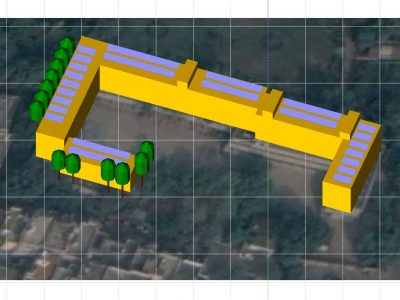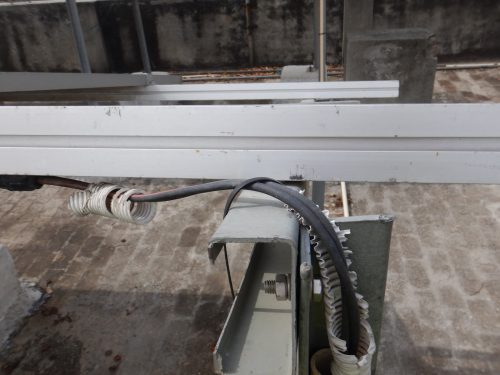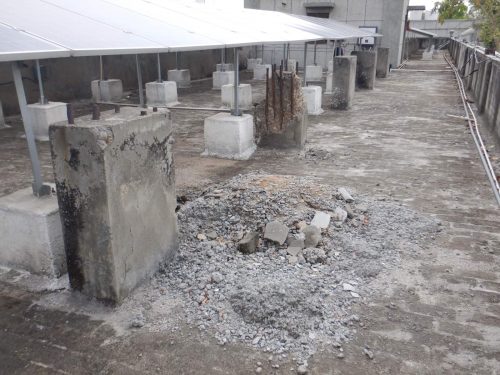Site II.3

Site ID
II.3
Health

COD
2017
Nominal Capacity
69.87 kWp
Average Specific Yield
536 kWh/kWp
Total Estimated Loss
21%
Possible Gain
16% to 20%
CAPEX, OPEX
0.7 ₹/Wp, 1.2 ₹/Wp/a
Expenditure / Energy
N/A
Abstract
The PV plant is affected by significant soiling due to pollution, near shadings caused by surrounding trees in the south and west part of the system and advanced PID degradation. It is recommended to: (i) increase the cleaning frequency, (ii) rearrange the strings based on the shading categories incase trimming is not allowed, (iii) implement an anti-PID box solution and (iv) install an irradiation sensor on the tilted plane that enables the calculation and monitoring of the Performance Ratio. The estimated production boost expected by the retrofitting actions lies between 16% and 20%.
Main Findings
Burned AC cables were reported a couple of times, as well as AC switches, leading to significant availability losses.
There is no weather station, and hence no PR monitoring.
Some of the module cables are fixed exceeding the minimum bending radius.
Tubes protecting cables are not robust and some have already broken.
Near shading is caused by nearby trees.
PID presence was detected via IR and EL inspections.
Impact on Performance
Heavy Soiling
A soiling loss of 7.4% was determined from IV curve measurements of a module before and after cleaning.
Estimated Loss
7%-8%
≈ 7.5%
Near Shading
Near shading losses are estimated to be 3.1% at the system level.
Estimated Loss
3%-4%
≈ 3.5%
Potential Induced Degradation
PID leads to a performance loss of as high as 26% at the module level based on the measurements conducted on site. The degradation is in a fairly advanced stage. The impact at the system level is estimated to be around 10%,
Estimated Loss
≈ 10%
Total Estimated Energy Loss
≈ 21%
Proposed Solutions
A weather station, or at least an irradiation sensor on the module plane, shall be installed so that the performance of the system can be properly determined.
The trees surrounding the system shall be trimmed if allowed. Otherwise, a restringing of the modules shall be conducted in the following way: modules with similar shading conditions shall be installed in the same string or at least assigned to one MPPT.
The cleaning cycles shall be increased based on the results of a soiling study that adjusts the cleaning needs to each season.
Anti-PID measures shall be implemented in order to stop or reverse the degradation. PV modules showing power drops above the warranty conditions shall be replaced. If the replacement is not possible, the modules shall be regrouped in power classes within the same string and assigned to individual MPPT.














